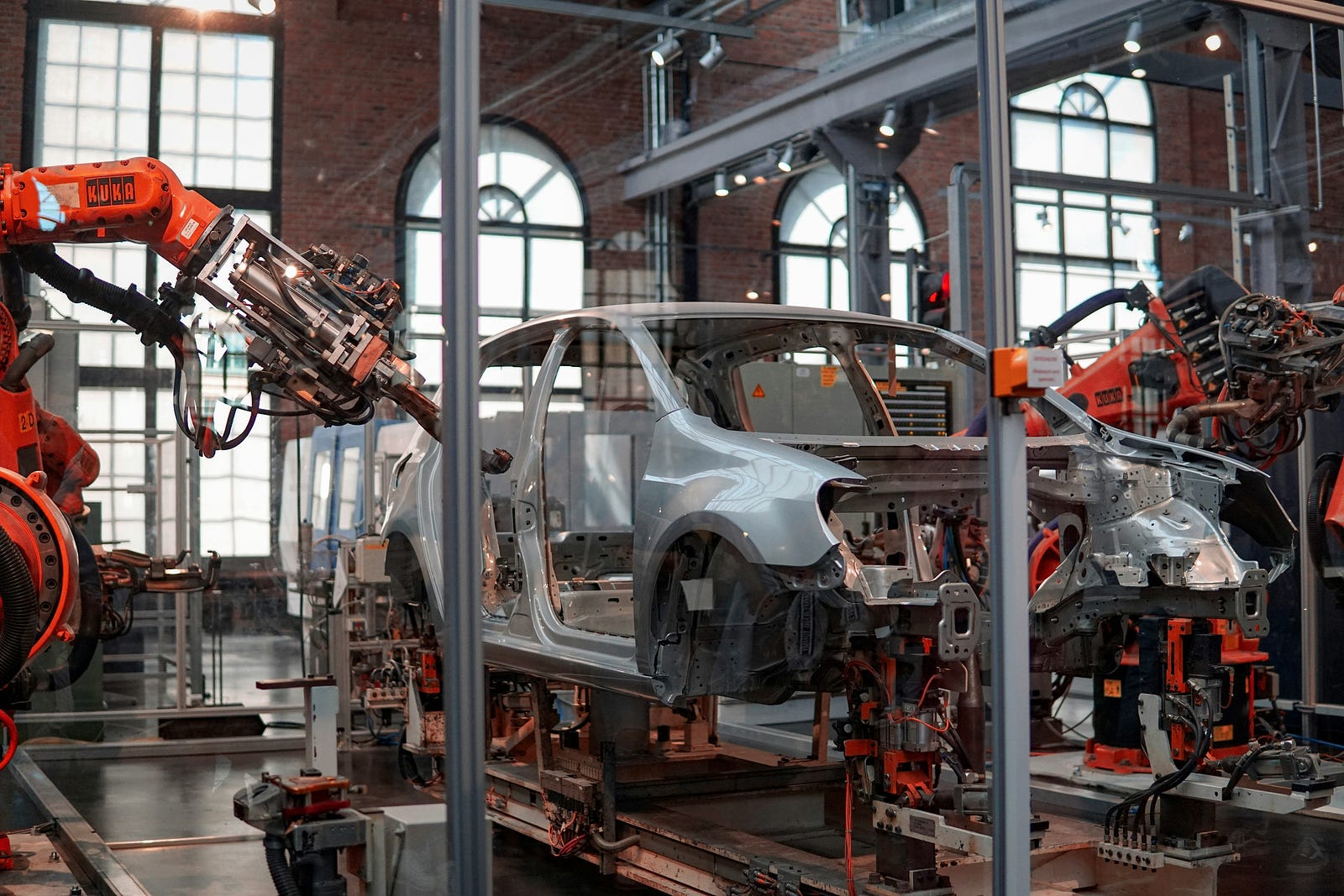Technology has revolutionised the human experience, but its increased sophistication comes with catastrophic costs
Today people are more nourished, live longer, are more educated, have more leisure time (and more money to enjoy their time off) than at any other point in history. We have the technological ability to feed, clothe, shelter and educate every person on Earth, as well as enhance health care and fight major diseases. We’ve never had it so good, and it’s all thanks to our increased ability to harness the power of technology.
Technology has revolutionised the human experience but its increased sophistication comes with some terrible costs. Our utilisation of technology has made us so powerful that we are changing the environmental conditions we depend on to sustain our technological civilisation. We now find ourselves on the precipice of social collapse.
How on earth has this happened? And, more importantly, can technology save us from a ghastly future?
A line in the sand
On the, how on earth has this happened, part of the equation, we need to consider that life in pre-industrial societies was much, much, slower. The economy was in a steady state as sustained economic growth wasn’t possible. As the economist Jeffrey Sachs puts it, this is because “no previous society had been able to break through the ceiling which a pre-industrial social structure, defective science and technology, and consequently periodic breakdown, famine and death, imposed on production.”
The Industrial Revolution transformed this dynamic as it utilised technology to overcome the limitations and defects of pre-industrial societies. Ever since we’ve designed ever more efficient technology that has continually increased production. That’s really why technology has transformed our lives.
The ability to produce more stuff has created more wealth for the businesses and societies that produce it. More wealth translates into higher incomes. Higher incomes increase people’s spending power and allow them to buy more of the consumable goods produced by that technology.
The thing about a growing economy is that producing more stuff requires ever-increasing throughputs of energy and resources. As the global economy has expanded, so have our energy and resource needs, which has seen our impact on the natural world increase.

Our demands on the natural world have now become so enormous that we’re in a state of ecological overshoot. This is where our demands for ecological resources and services exceed what Earth can renew in a year. And it’s been that way since the 1970s. We’re in a state of ecological emergency, but it hardly feels like it, does it?
Overshoot is possible — for now — because “we can cut trees faster than they mature, harvest more fish than the oceans can replenish, or emit more carbon into the atmosphere than the forests and oceans can absorb.” The result is that inputs of energy and resources are becoming scarcer, and wastes (like carbon emissions) are having increasing environmental impacts.
The high and rising living standards many now view as a basic expectation would be the envy of previous generations. But consumer society can’t sustain itself within environmental limits. In other words, “humanity is running an ecological Ponzi scheme in which society robs nature and future generations to pay for boosting incomes in the short term.”
Overshoot is the reason concentrations of greenhouse gases are increasing in the atmosphere, creating the climate crisis. Overshoot is why wildlife is being exterminated en masse, triggering the sixth mass extinction event. Overshoot is why the oceans are becoming more acidic, it’s why the soils are being poisoned from phosphorus loading, it’s why freshwater is becoming scarcer. Combine the impacts, and we are in the midst of an ecological crisis that risks triggering multiple tipping points in the Earth system.
Should we continue on our current path then triggering tipping points is all but guaranteed. If that happens the environmental conditions that have remained remarkably stable for the last 10,000 years are going to transform beyond recognition. Seeing as our technological civilisation depends on the natural world for seemingly everything, if the natural world changes then this hyper-connected global society is going to collapse.
It’s safe to say that the technological age we live in is a double-edged sword. The good bits — high living standards that allow so many to live lives of comfort — can only be maintained by eliminating the bad bits that are changing the environmental conditions.
So can that be done? Can technology help us hold onto the good bits while eliminating the bad bits?
Growth at all costs
The thing about technology is that it doesn’t just spontaneously come into existence. The technology that comes into existence does so because it serves a purpose to capitalism which, as we’ve said, is designed to increase production which leads to economic growth.
Hang on though, isn’t a growing economy the very thing that has created an ecological crisis? Well, yes, but don’t assume that this connection is recognised. Growth at all costs defines the parameters we’re working in, and our relationship with technology is reflective of that desired outcome.
Every indicator suggests that increasing environmental impacts are intertwined with a growing economy, but this connection can’t be made because economic growth is the foundational belief that holds a capitalist economy together. One can not be without the other. This helps explain why rather than being the problem that needs to be questioned; economic growth is considered the solution to our problems.
There is a belief that verges on the gospel that any energy and resource limits to growth “will be eliminated as they arise by clever development and deployment of new technology.” This assumption that technological innovation will always allow us to overcome environmental limits is known as technological optimism.
Technological optimism in the face of ecological overshoot appears to be a blind delusion, yet there is an unquestioned belief that efficiencies will save the day.
Absolute decoupling
A way efficiencies could, in theory, do so, is through absolute decoupling. This is where production processes become so efficient that any associated environmental impacts of growth become negligible.
To “achieve such a future we need to absolutely disconnect or ‘decouple’ economic growth from a wide range of environmental pressures.” It’s no good decoupling growth from a single environmental pressure, like decarbonising the economy. What’s necessary is to decouple growth from a “range of environmental pressures to ensure that ongoing economic growth does not push some ecosystems past ecological thresholds to collapse.”
The IPAT formula reveals the potential impacts decoupling efforts can have, where;
I = A x P x T
I represents the total environmental impact, P represents the population, A represents affluence, and T represents the environmental impact per unit of product/service consumed.
Population growth is forecast to increase throughout the twenty-first century. While affluence is wrapped up in ever-increasing rates of consumption. So the only viable political and economic option to reduce the total environmental impact is to focus on T — the environmental impact per unit of product or service consumed.
Many companies have embraced a ‘whole system design’ approach known as dematerialisation. The idea is to make the same product or service with fewer materials. Dematerialising products or services creates a win-win-win where an efficiency decreases business costs, decreases the environmental impact per unit, and consumers pay a lower price. That third win can induce a rebound effect, where an efficiency that reduces the impact per unit of product/service consumed ends up increasing the total environmental impact.
This can happen for a few reasons. If a product is cheaper to produce, the company can sell it at a lower price, encouraging more people to buy it. So while ‘T’ decreases for each unit produced, with greater demand for a cheaper product, ‘I’ increases because more products are sold. The rebound effect can get even worse because those who buy the product at a lower price now make savings and can use that disposable income to buy other products. The rebound effect is a product of the Jevons paradox, where psychologically we would expect an efficiency per unit to lead to an overall reduction in energy intensity, but efficiencies lead to the opposite, more energy gets consumed due to the efficiency.
Dematerialising products can’t reduce ‘I’ in isolation because the underlying problem is that affluence and social success are intertwined with a materialistic lifestyle. A culture of consumption means the drive to make more, have more, want more, is ever-present.
Between 1980 and 2007, the material intensity of the global economy, measured as the amount of biomass, mineral and fossil fuels required to produce a dollar of world GDP, decreased by 33 per cent. A remarkable achievement. But world GDP grew by 141 per cent at the same time, so total resource use still increased by 61 per cent.
While efforts to dematerialise products are well-intended, without questioning economic growth, technological efficiencies just increase productivity, which locks in further environmental impacts.
Geoengineering
Innovation doesn’t end with efficiencies. Technological optimists place hope in geo-engineering acting as a silver bullet that can stop the climate crisis in its tracks. Geo-engineering is “the deliberate large-scale intervention in the Earth’s natural systems to counteract climate change.” There are a variety of techniques and ideas for how best to implement such interventions.
Solar radiation management (SRM) is a technology that seeks to block some of the sun’s incoming sunlight; one such idea is to launch giant mirrors into space. SRM is high risk as it interferes with the climate. There’s no guarantee models will play out in reality and there are major uncertainties as to potential side effects, such as how SRM affects rainfall patterns. There’s also a risk that should any SRM intervention stop abruptly or fail, global temperatures could rise rapidly. On a practical level, deployment would require global consensus, which is unlikely, given the risks.

A more viable solution is Carbon Capture and Storage (CCS). The IPCC considers CCS vital in achieving the goal of net zero. The idea is that carbon dioxide is captured and then stored deep in the Earth’s crust, essentially creating an artificial carbon sink. The risks of side effects are low, while deployment is localised and wouldn’t require global consensus.
The technology sounds promising but with 27 fully operational CCS facilities worldwide the industry is in its infancy. To have any tangible impact CCS would need to be scaled enormously. To gauge the scale required, since Shell’s Quest CCS facility opened in Alberta, Canada, in 2015, it has captured just over 1 million tonnes of CO2 per year. If CCS were to play a role in achieving net zero it would need to capture a large percentage of emissions. For argument’s sake, 4,000 such facilities would be needed to capture four billion tonnes of CO2 per year (10 per cent of global CO2 emissions).
An obstacle to scaling is the vast cost. Shell received $865 million from the governments of Canada and Alberta to build and operate Quest. CCS isn’t designed to create any value outside of capturing CO2 so the only incentive to build and maintain such a facility seems to be for ulterior motives. In the case of Quest, it’s not coincidental that the facility is in the same state as the Alberta Tar Sands, the world’s most destructive oil operation.
The Canadian government has much to gain in investing in such a facility which feeds a perception that any continued operations at the Tar Sands can be offset by Quest. Critics aren’t so convinced, with some arguing Quest emits more CO2 than it captures. In fact, a recent report argues that 13 flagship CCS schemes, representing 55 per cent of captured CO2, have either failed entirely or captured much less CO2 than expected.
Rather than question the causes of undesired outcomes, our hopes are increasingly being pinned on technology that either doesn’t exist, is prohibitively expensive to scale, or is performing inadequately.
Caught in a trap
Given modern civilisation only exists due to our ability to harness technology, it’s understandable why there is so much faith in the power of innovation to overcome ecological challenges. The issue is that seeing as it’s our current relationship with technology that’s responsible for the ecological crisis, there’s no guarantee it will also serve as the solution.
So could technology save us from collapse? Yes, technology could be used in radically different ways to maintain abundance within limits. But that’s beside the point. Technology is not the issue here, it’s how we use technology and to what ends. Capitalism depends on economic growth to sustain itself, so it sees no need to redefine our relationship with technology. It’s for that reason that social collapse appears inevitable.



